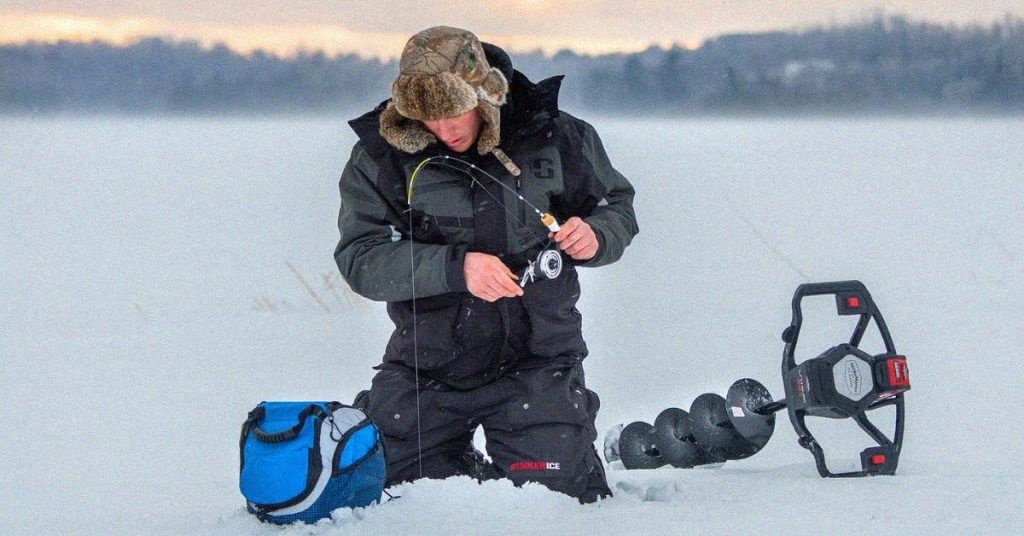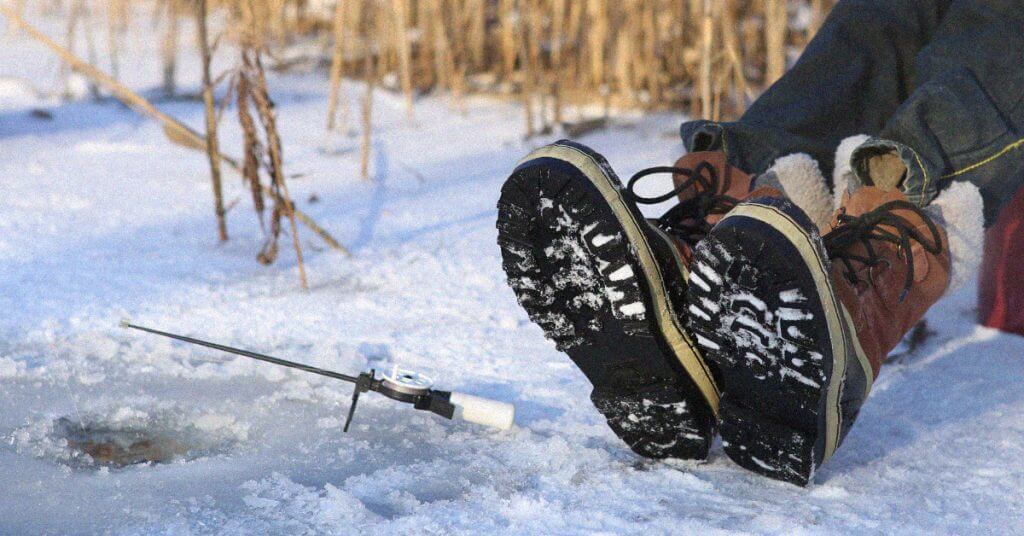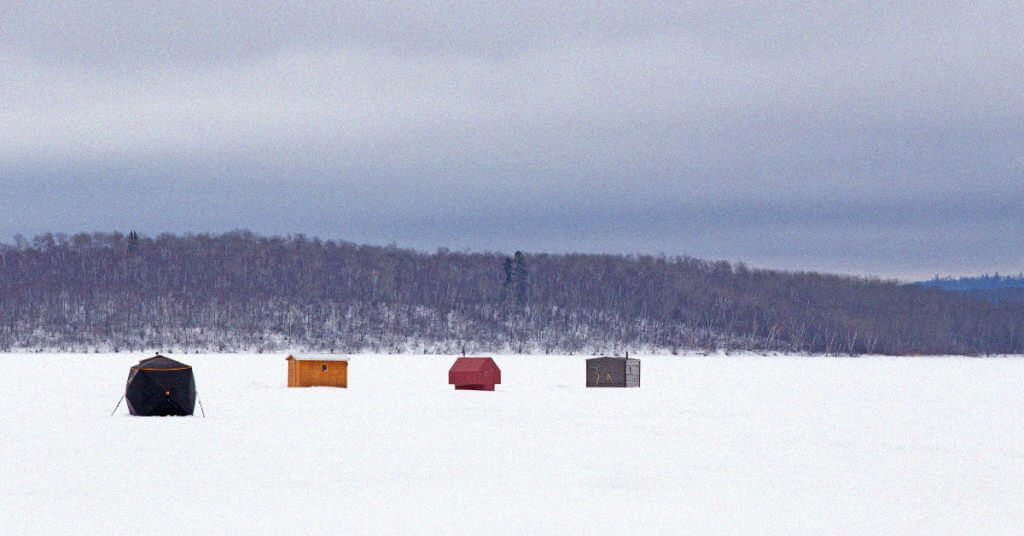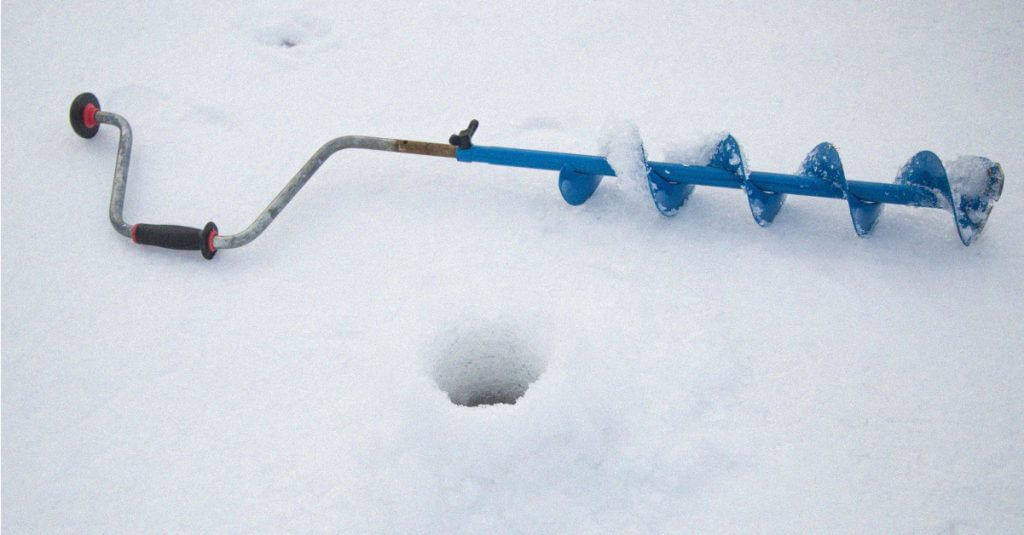Lake trout ice fishing takes work. This is because the trout move from shallow to deeper waters throughout the season based on temperatures and food availability.
Not to worry, though; you can quickly learn everything you need to know to get started with lake trout ice fishing.
The first essential is understanding their biology and how water temperatures affect them.
You also need to know where to find them and follow some tips to help you catch lake trout.
Keep reading to learn more about ice fishing for lake trout.
Understanding Lake Trout
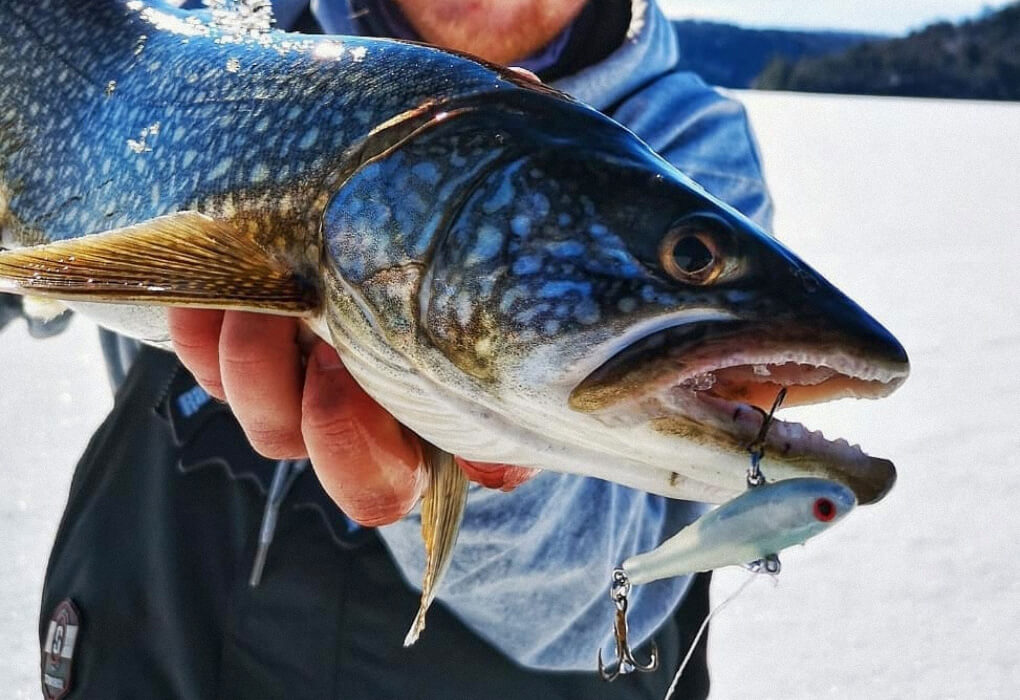
It’s vital to understand the biology of lake trout and the factors that influence their behavior. The following section provides an overview of their conduct and biology.
Ideal Temperature Conditions
As mentioned, trout survive best in cold water with temperatures ranging from 40°F to 52°F.
These species are cold-blooded, meaning that the environment controls their body temperature.
So they are susceptible to warm waters during the summer.
How Fast They Grow
This species type is also considered slow-growing.
Most lakes’ temperatures and food supply are insufficient to allow them to reproduce as fast as they usually do.
Thus, it could take some time for them to grow from fingerlings to adults. However, trout are also known to live long lives.
It has been recorded in a scientific fishing report that the oldest lake trout have lived up to 60 years of age!
Body Structure
When it comes to body appearance, trout have white or yellowish spots on their body. Their body has a dark green to light gray background.
Additionally, lakers are also known to have a tiny adipose fin and a forked tail fin. Their forked tail fin propels them through the water at fast speeds.
Also, trout species have a very large mouth which is often used to catch their food. It has sharp and conical teeth, which can easily cut those who attempt to hold them by the jaw.
Spawning and Life Cycle of Lake Trout
Lake trout spawn over large cobbles and rocks at night during the fall. Females undergo courtship either with a single male or a group of males.
The fertilized eggs will then fall between the rocks and develop gradually during the winter and fall seasons.
The eggs will take approximately four months for them to hatch. However, not all eggs will hatch. The ones that survive will move into deep water to develop into giant lake trout.
Feeding Habits of Lake Trout
Lake trout feed on various fish species like yellow perch and small aquatic organisms such as crustaceans, clams, oysters, and tubifex worms.
Additionally, these species are known to feed on copepods and zooplankton when they begin their life cycle.
However, it’s important to note that these species are majorly piscivorous. It means that they feed primarily on fish species.
They are known to prey on species such as whitefish, shiners, ciscoes, and suckers.
Knowing this different information about these species is good before ice fishing for lake trout.
Where to Find Lake Trout Beneath the Ice
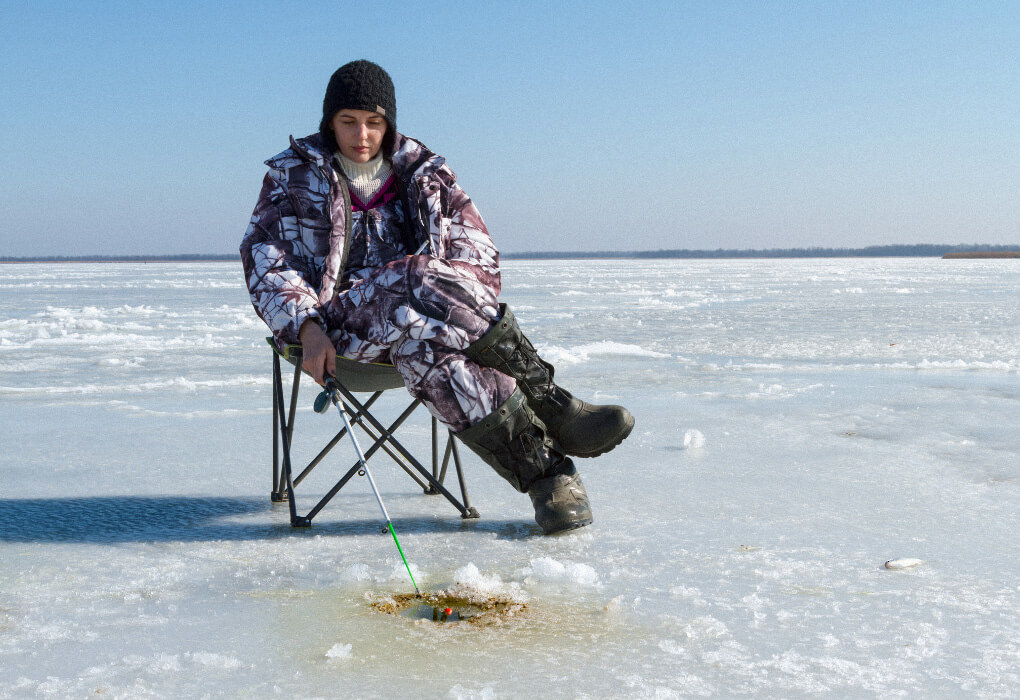
Now that you have basic knowledge of these species, you must be wondering about the best places to ice fish for trout.
Though it’s challenging, there are still a few things you need to know about finding lake trout.
The most crucial thing you need to understand about trout is that they are a highly mobile freshwater fish.
They tend to move from one place to another and barely stay in one place if they have the whole lake.
Often, you will find them swimming in small groups around deep structures like islands and submerged humps (about 20 to 80 feet of water) while looking for their prey, commonly baitfish.
What this means is, in most cases, you will find trout anywhere you spot baitfish, as they’re their primary food source.
These species are known as site predators, relying on clear water to notice and catch their prey. After catching their prey, trout will often make a meal of them.
Weed beds surrounding the humps are one of their favorite places to feed.
For hungry lake trout, you will most likely spot them on approximately 15-foot shallows, near the edges of healthy weed beds, or any structure with plenty of perch.
You can use a bathymetric electronics map that identifies these areas around the lake. It will help you to find the structure where you will likely find the baitfish.
After locating a promising area, drill holes and use an underwater camera or fish finder to locate the huge groups of baitfish that are likely to attract lake trout. Then tie a tube jig and start fishing for lake trout.
When contemplating how to ice fish for trout, consider areas where you can find small fish that lake trout are likely to eat.
Ice Fishing for Lake Trout
Lake trout are extremely powerful and a large fish species. Thus, you must ensure you are well-equipped with the correct ice fishing combos and techniques.
For instance, use something other than a light rod that anglers use when catching bluegill or crappie. Such as beefier rods used when catching a catfish, bass, or walleye.
A tip-up or jigging rod are some of the best tools for trout ice fishing. Let’s take a brief look at these two recommendations.
Using Tip-Ups
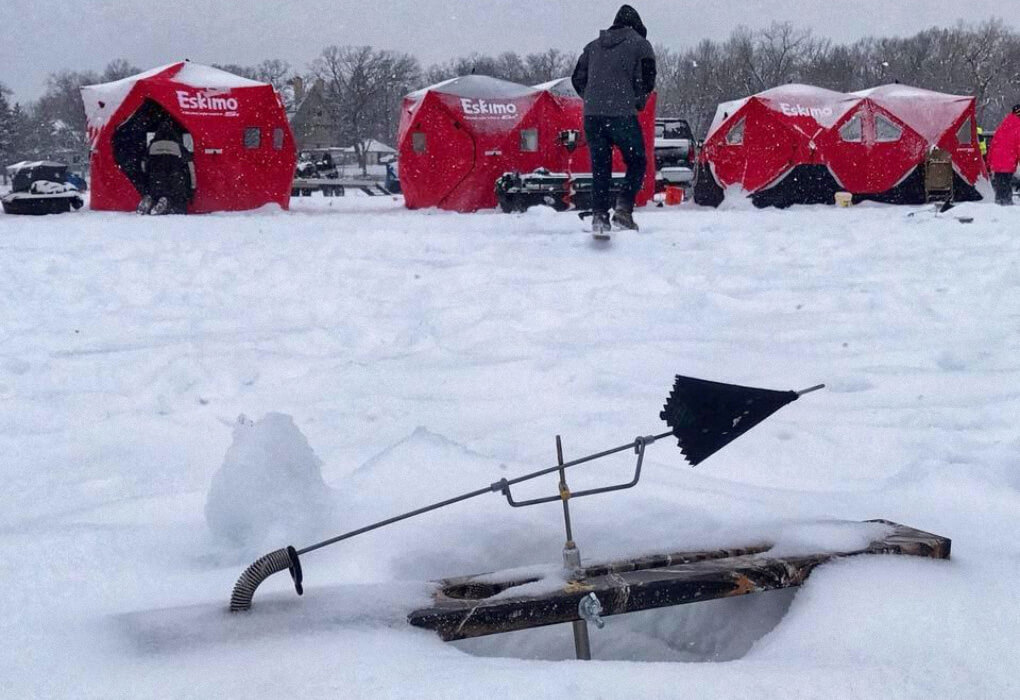
Tip-ups are widely used by anglers seeking trout in the winter.
These fishing devices allow you to place your frozen or live bait below the ice hole and leave them. Here’s how you go about ice fishing for trout using a tip-up:
Step 1: Drill a hole and measure the water depth at that location.
Step 2: Set up your tip-up, equipped with a flag, and let it rest on the top of the hole.
Step 3: Place the bait (crawlers or minnows) onto the hook and drop it to the depth where the fish are swimming.
Step 4: Place a float on the flag using a zip tie or line and set it to the desired depth.
Step 5: When a fish bites, the flag will raise, and you can retrieve your fish.
Jigging for Lake Trout
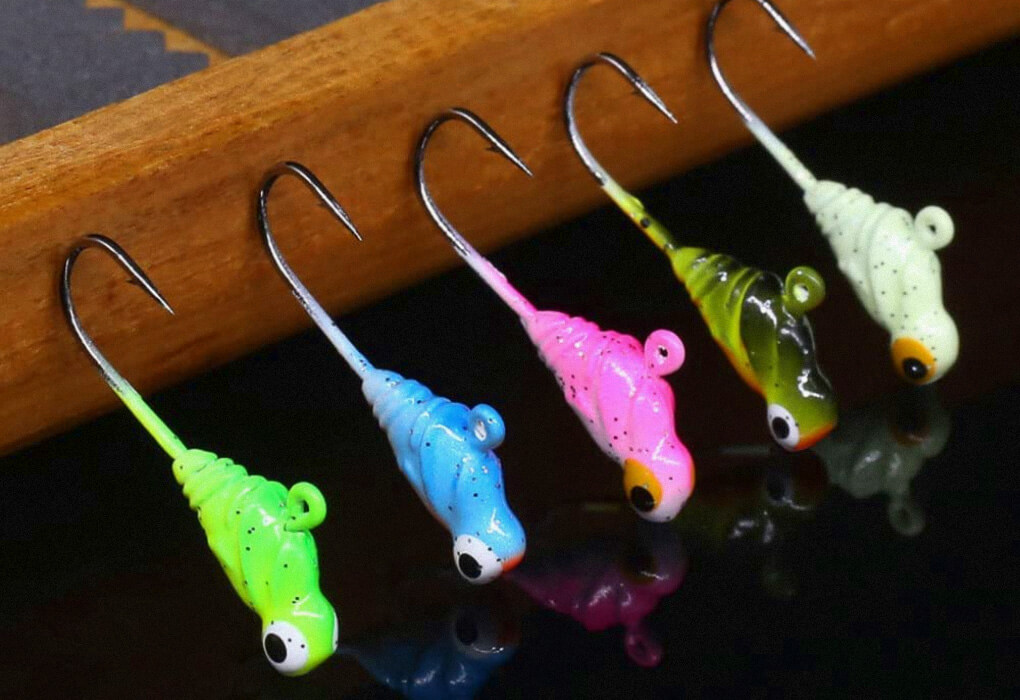
Apart from using tip-ups, you can jig for lake trout using jigging rods and ice fishing lures such as jigging raps. Jigging rods are another great tool for ice fishing for trout because they are short but strong.
If you want to fish ice holes that are too large to handle with a tip-up, this is the right tool.
Anglers can use these rods to jig or crank with various lures, including jigs, soft plastic worms, and dressed bait.
When using this technique, ensure you understand how to make your lure dance and swim in the water column.
It will help to attract big fish and make them bite your jig. Ice trolling is another incredible jigging technique that can help you catch more lakers.
Best Lake Trout Ice Fishing Tips
Are you contemplating how to catch lake trout ice fishing? If you have any queries, below is a detailed list of the best ice fishing tips you can use to catch these fish.
Sweeten Your Lake Trout Ice Fishing Lure
Adding a bit of scent to your lure will help it appear more natural. Make sure you have a good amount of scent, as your lure will soon be covered in water.
Additionally, you may opt to rig small minnows on a treble hook to make it more appealing to trout.
Incorporate The Use Of A Leader
Use a leader such as a monofilament or a 14-pound test fluorocarbon of about 4 feet to help you. The leader should be at least two feet long and tightly tied to your setup.
Rhythm Is Very Important
Matching the natural rhythm of the baitfish will give you the best opportunity of catching a lake trout.
Use Numerous Poles Where Legal
Trout love moving in masses, so you rarely find them moving solo. Therefore, when using poles and jigging rods to catch lake trout, make sure you fish at different depths and locations.
It’s better to have multi-hole rigs to catch more fish to do this effectively.
Be Patient
Patience is extremely important. Keep in mind that the fish will seldom bite on the first attempt.
Final Thoughts
Lake trout ice fishing can be challenging but fun when you have the right equipment, like an ice fishing flasher, and the right knowledge.
Understanding trout biology and the best methods of fishing for lake trout have a significant impact on the outcome of your effort.
Let us know what your biggest lake trout is in the comments!

